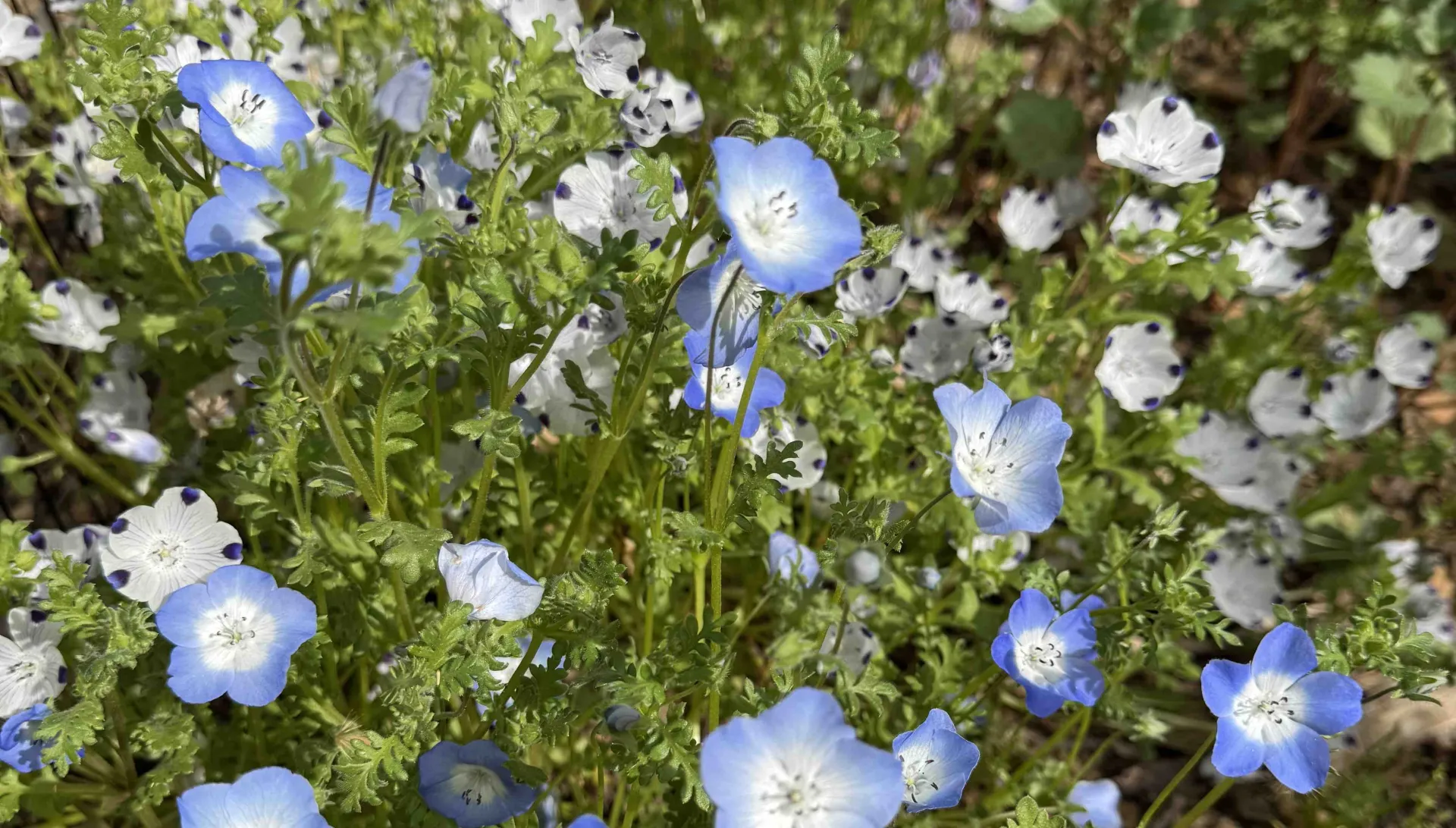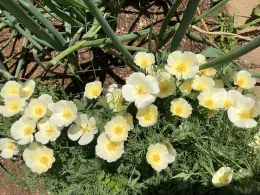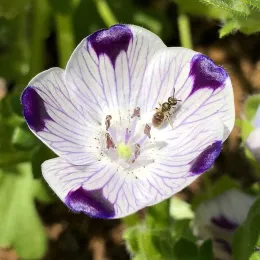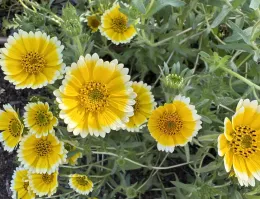
Article and photos by Megan Smith -

I have to say, fall could be my very favorite time of year. Not necessarily because the garden is bursting with abundance and color, in fact quite the opposite. Plants are shutting themselves down, ending their life cycle or going dormant. Most everything is going to sleep as the cool weather slides over the valley and brings desperately needed rain. The shy fog appears again and wraps us in its cold embrace. But what I think about at this time of year in particular is the promise of potential, because now is the perfect time to plant something special. Dozens of seeds of all kinds are gently placed in the cooling soil at just the right time so that they receive the cold temperatures they need to break their dormancy and spring into action. And of all those seeds, the ones that hold my heart, are the California native wildflowers.

I’m sure almost everyone in California knows about the California poppy, Eschscholzia californica. A golden cup of color that fills our spring hills with swaths of orange glow. But there are countless other native blooms that appear in concert with our dear poppies. And the good news about these lesser-known plants is that most of them are very easy to cultivate in your home garden.
Planting several groups of native annual seeds now will yield a pop of color when you most need it in the early spring. Now I’ll share with you a few of my favorites and where to find them in hopes that you’ll give them a try yourself in your own garden. I know you’ll be hooked, just like I am.
A crown jewel of this collection of plants is most definitely Nemophila. These tiny flowers are an extremely important source of food for early-appearing native bees who wake up from their winter slumbers earlier than the European honeybees many of us are more familiar with. There are various species like N. menziesii, which shines out in a baby blue hue, giving it its common name, “Baby Blue Eyes.” But you can also find N. maculata or “Baby Five Spot” and N. discoidalis or “Penny Black.” All of these are worth trying; they’re all charming, and they all have an important part to play in our California ecosystem.
Another favorite of mine is “Tidy Tips” or Layia platyglossa. Without fail, with its cheery yellow and white flowers, it brings a smile to my face every year. They have a daisy-like structure with rich yellow and white accents that make them stand out in a crowd.

A somewhat lesser-known annual that is as unique as it is bewitching is Madia elegans or “Elegant Tarweed.” The plants grow a tall main stem and open at the top with a cluster of seemingly never-ending yellow blooms with maroon accents. But the really incredible thing about this plant is its scent. All you need to do is lightly brush against this plant, and it gives off a fruity smell that to me seems like a combination of pineapple and cucumber.
And I cannot recommend this next flower enough, such a star in the garden when it is in its full glory: the Gilia tricolor or “Bird’s Eye Gilia.” Light turquoise pollen is cupped inside its purplish ombre petals, and the plants explode with multiple blooms.
Limnanthes douglasii, or “Meadowfoam” is one of the very first of these native annuals to bloom in the late winter/early spring. And like some of these other flowers, they seed themselves readily. Often referred to as the “fried egg” flower because of the coloring of its petals.

Another true-blue flower in this group is Phacelia campanularia or “California Bluebells.” Really a very rare color in nature, this vibrant blue flower has delicate white pollen hiding inside and looks striking in a garden bed.
Phacelia tanacetifolia or “Tansy-leaved Phacelia” is more well-known but still a winner in my book. A very powerful pollinator plant, as it attracts loads of bees looking for early sources of food as winter fades. It seeds itself freely and sports a playful silhouette with its fiddle-necked buds.
In terms of sourcing these plants, it’s easiest to purchase seeds or starts from a trusted retailer. Although UC ANR does not recommend any specific ones, I have had good results with seeds from Larner Seeds and starts from Annie’s Annuals and Perennials. Seeds planted now will take advantage of the winter rain, and you will begin to see them sprouting as early as December.

There are many more native annual flowers that you should definitely take the time to investigate. The flowers I’ve included in this article are only a small fraction of what’s out there, and dear reader, I encourage you to take some time to explore these incredible flowers that, in my opinion, are a must-plant in my own garden. Every year, it’s a gift to see these precious blooms appear and, in turn, the pollinators who visit them and need them for their survival.
